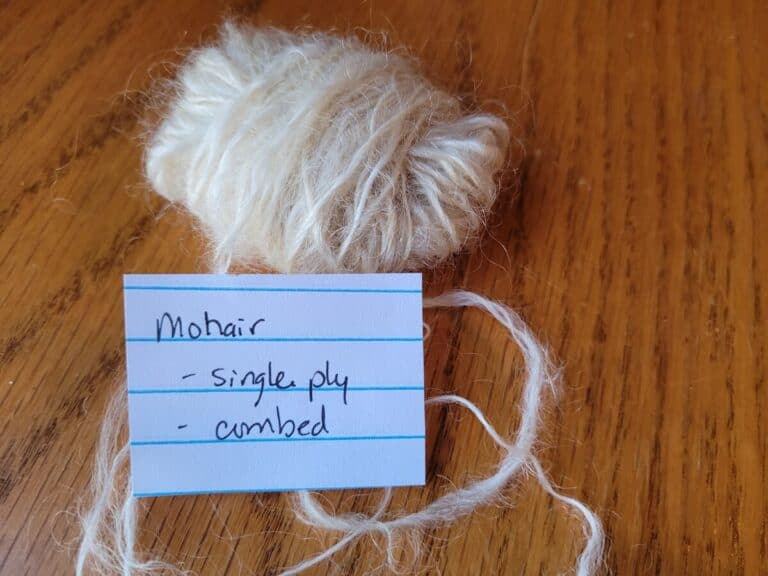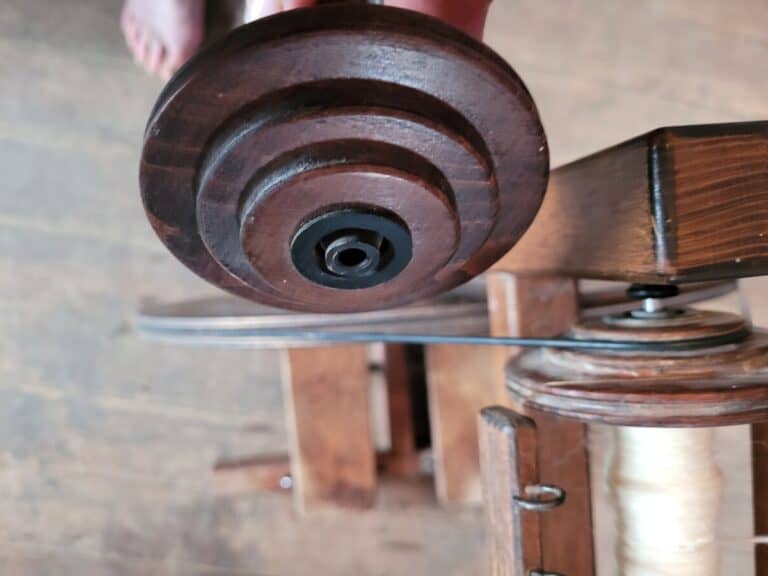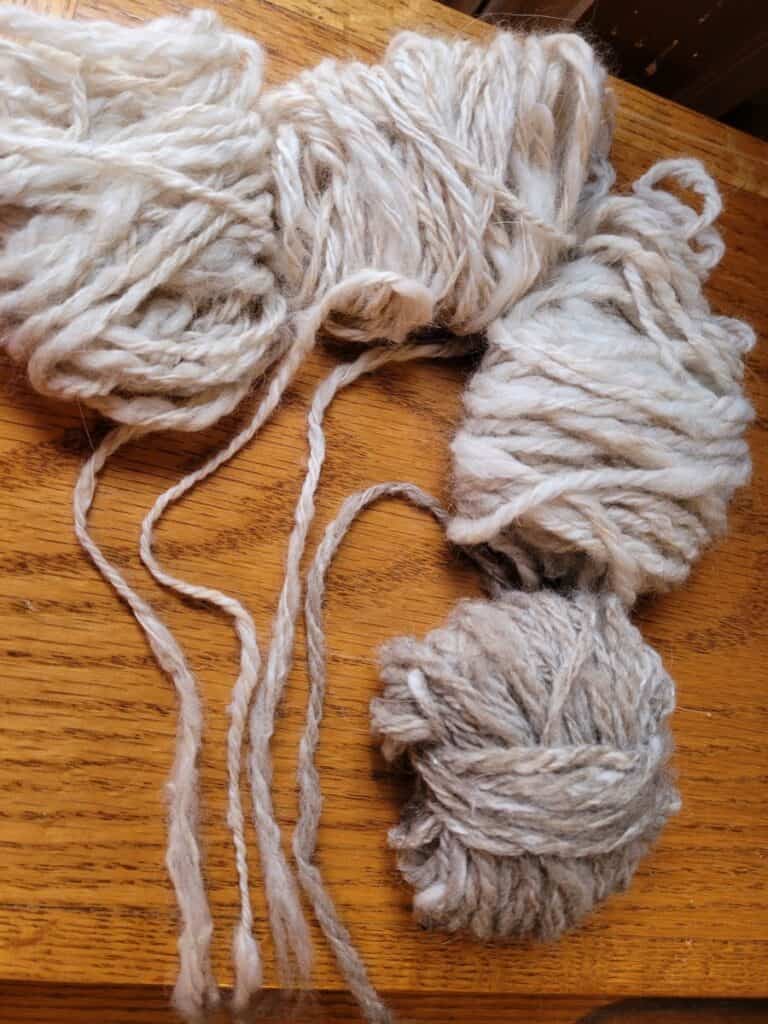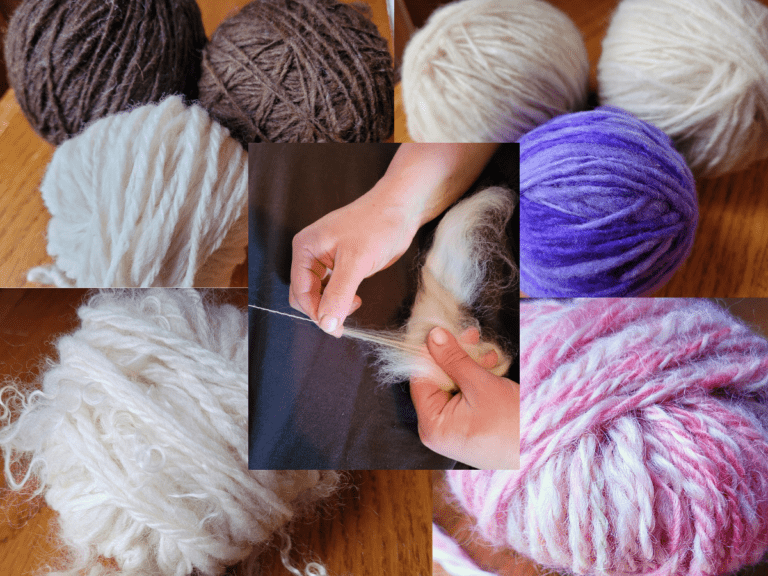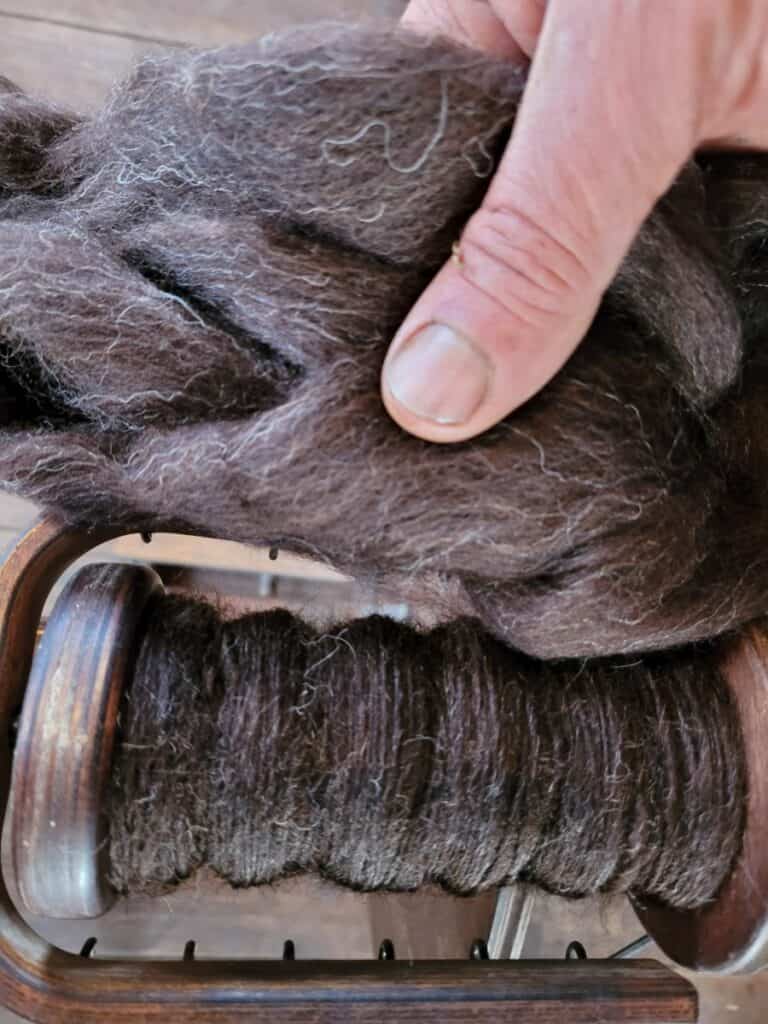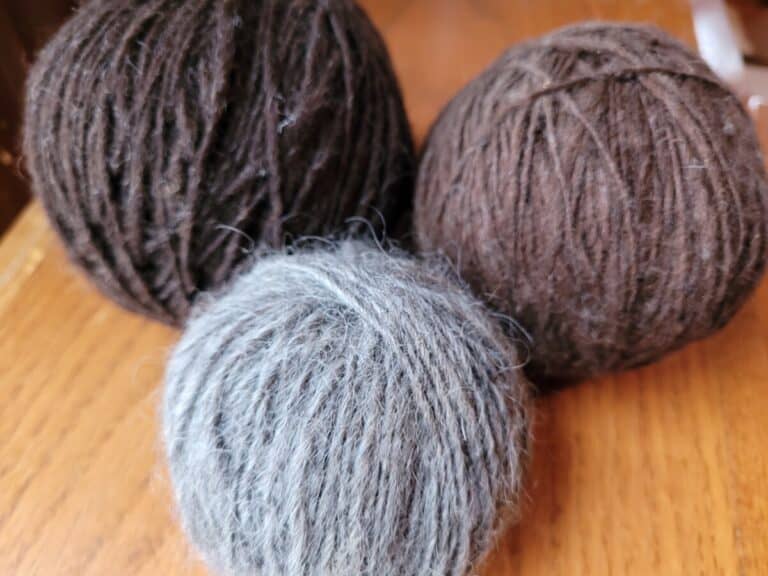How To Hand Spin Angora Wool For Beginners
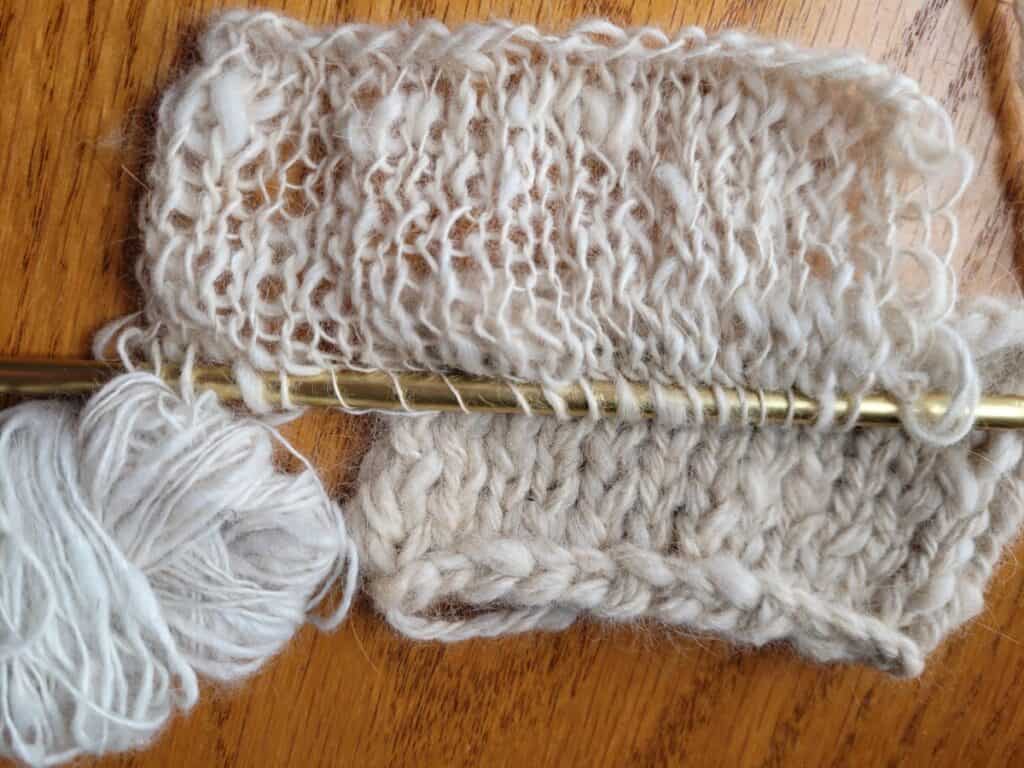
How are you going to spin up that wonderful angora wool? I’m sure you have heard the rumor that angora is hard to spin, not so!
But…angora is different to spin than most wool, so you need to make a few adjustments in your spinning to get the yarn you are hoping for.
Pros And Cons Of Spinning Angora goes over the good news and the not so good news of working with angora as a handspinner.
How to hand spin angora
First off, when you are planning to spin angora know that twist is the key! If you tend to over spin your wool yarns, you are perfect for angora!
Since you want to keep the twist high, especially if you plan to ply this yarn, work with your higher (faster) whorl ratio, which will be the smallest whorl on your wheel.
I like to have the tension set a bit higher than normal, which gives me something to pull against as I am putting a ton of twist in the yarn.
To get the higher amounts of twist, I am treadling pretty aggressively and have the wheel on the highest ratio I have, which is a 10:1.
I do not have a fast wheel when it comes to spinning finer yarn (mine leans more to worsted weight), so I don’t have experience with a higher ratio option, but if I had it, I’d use it.
I know that I am putting enough twist in the yarn when it feels a bit like twine or wire!
Wiry is not normally what we are going for, but this idea will help you to end up with an angora yarn that holds together!
A wiry, almost hard yarn on your bobbin is what you are looking for at this stage.
When you set the yarn, it will fluff up when dry, especially after you full it which means thwack it after you alternate cold and hot water baths.
Consider what clothes you are wearing and if you notice the angora tends to stick to you, change into a natural fabric or try rolling up your sleeves.
Finally, focus on what you are doing! I find it can be easy to get distracted and spin my “normal” not necessarily how I need to be spinning for angora.
I like to listen to podcast style videos as I spin, which is fine when I am spinning something I have experience with, but now is not the time! Focus on the angora.
Additionally, if you are already a bit stressed, skip the angora and spin something that is easy for you. It’s tough to learn when you are already frazzled.
Work with the angora when you are fresh, it will make quite a bit of difference. If you find yourself getting frustrated, stop and take a break.
Come back to the angora in a few hours or the next day, that gives your hands time to catch up to your mind.
Give yourself some grace and you’ll find that spinning the angora goes better the next time.
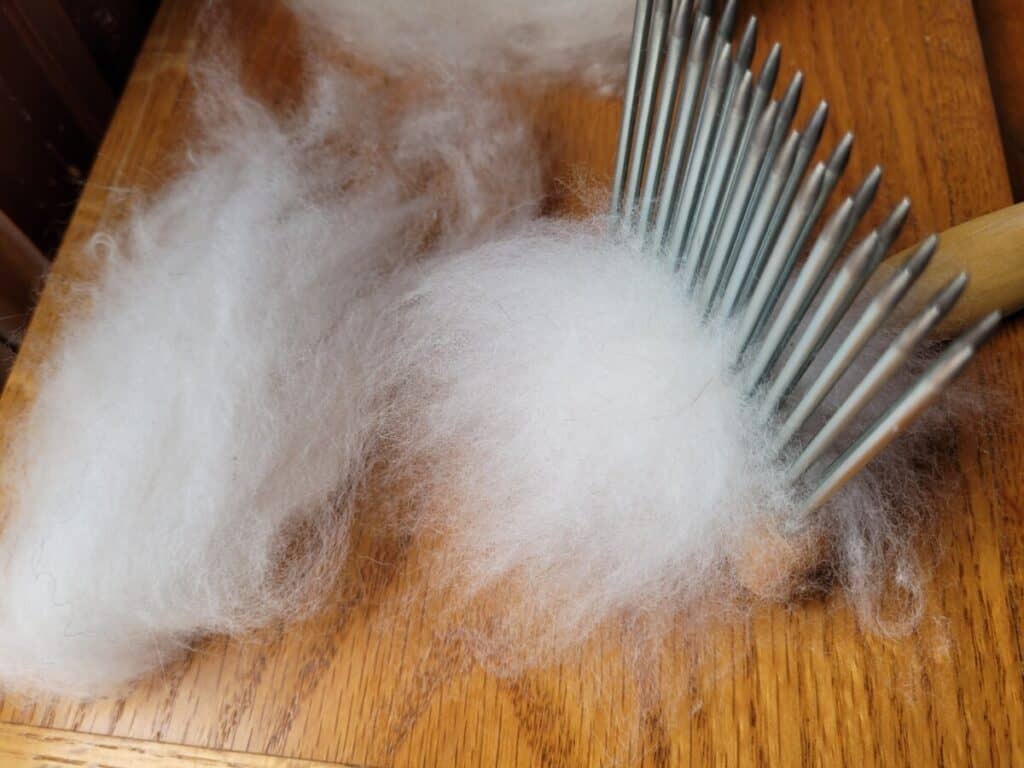
Angora troubleshooting tips
If your angora spinning is not going the way you had hoped, here are a few of the things that I have found to help me get the beautiful angora yarn I am hoping for.
Use well prepared angora fiber
Use well prepared angora wool for your spinning. Purchase angora roving or use your very best home harvested fiber.
Which Angora Is Best To Spin? goes over the things you need to look for to get top notch angora fiber for your handspinning projects.
You have plenty of things to concentrate on while you are spinning, working around inconsistencies in the wool is a bit too much to handle right now.
Be selective about the angora fiber that you are using, this is mainly for anyone harvesting their own angora, rather than purchased fiber.
If you are like me, you think “well, I’ll use the not so great parts, like shorter bits, to learn on and save the best for when I know what I’m doing”, bad idea.
It was so hard for me to not keep every last little bit of the wool, even the not so good parts, that rabbit was harder to clip than I thought!
If this is sounding familiar to you, keep the good stuff in one bag and the “I can’t part with it even though it’s not great” stuff in a different bag.
Start spinning with the good bag. Use your best to learn with, the short or neppy bits will make learning harder.
To be clear, there is nothing wrong with the neppy bits, if you like the idea of them being in the yarn for a neat texture, just avoid them for now to make learning easier.
Use the longest angora you can get
You’ll want to use the longest angora fiber that you can get.
The commercially available angora combed tops that I can find are listed at 2-3 inches, sometimes 2-2.5 inches.
You’ll also have options to buy direct from online shops. Go with whatever one will give you the longer staple length, it will be easier to hold together.
Generally, angora that has a shorter staple length is sold for felting, not spinning. Be sure you buy the longer, spinnable angora when you are shopping around!
Look for the words “ready to spin” or “luxury fiber” as well as “angora for spinning” to be listed in the description, to be sure you are getting the longer angora.
Go all in on the twist!
If you are used to making a nice, soft yarn with your normal spinning fibers, you are being way to nice to the angora! Start twisting the heck out of it!
When I am spinning, I notice that the yarn looks almost hard and a bit wiry. A lot like the disasterville stuff I used to spin when I was just getting started spinning!
No need to worry, keep up the twist! The angora will relax when set and fulled.
Attempt to spin a thinner yarn than you think you will need, as mentioned above, it will puff up and soften later.
The high twist will help it hold together since there will be more twist per linear inch of a thin yarn than with a larger gauge yarn.
Like most anything else, once you get the feel for spinning angora, it will be easier for you to work with it. Keep practicing, you’ll get it!
The Joy Of Handspinning has an overview of angora fiber, from preparation to uses, if you want another perspective on working with angora.


